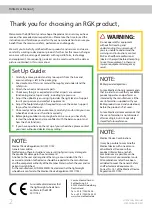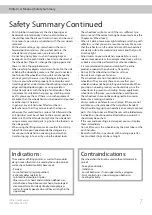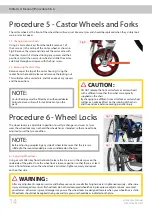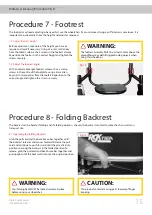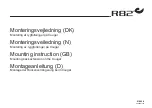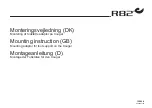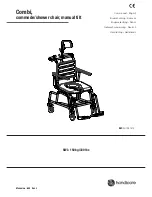
Hilite User Manual | Safety Summary
Hilite User Manual
UM-Hilite-020-EU
7
Safety Summary Continued
• Anti-tip tubes should prevent the chair tipping over
backwards unintentionally. Under no circumstances
should they take the place of transit wheels, and be used
to transport a person in a wheelchair with the rear wheels
removed.
• With extreme settings (e.g. rear wheels in the most
forward position) and less than perfect posture, the
wheelchair may tip over even on a level surface.
• Do not hang heavy items such as shopping bags or
backpacks, on the push handles, head rest or backrest of
the wheelchair. These can change the tipping point and
there is a risk of tipping backwards.
• When reaching for objects which are in front of, to the side
or behind the wheelchair, make sure that you do not lean
too far out of the wheelchair. If you do it can change the
centre of gravity there is a risk of tipping or rolling over.
• Only use your wheelchair properly. For example, avoid
travelling against an obstacle without braking (step, kerb
edge) or dropping down gaps, or using escalators.
• Only attempt stairs with the help of an attendant. There
is equipment available to help you, e.g. climbing ramps
or lifts, please use them. If there is no such equipment
available, then the wheelchair must be tipped and pushed
over the steps (2 helpers).
• In general, any anti-tip tubes fitted must be set
beforehand, so that they cannot touch the steps, as
otherwise this could lead to a serious fall. Afterwards the
anti-tip tubes must be set back to their correct position.
• Make sure that the attendant only holds the wheelchair
using securely mounted parts (e.g. not on the footrests or
the side guards).
• When using the lifting ramp make sure that the anti-tip
tubes fitted are positioned outside the danger area.
• Secure your wheelchair on uneven ground or when
transferring (e.g. into a car) by using the wheel locks.
• The wheel locks will only work if there is sufficient tyre
pressure and if the correct setting has been made (see the
Chapter on “Wheel locks”).
• When it is dark, please wear light clothing or clothing with
reflectors, so that you can be seen more easily. Make sure
that the reflectors on the side and back of the wheelchair
are clearly visible. We would also recommend that you fit
an active light.
• Adjustments to your wheelchair, especially to security-
relevant components as for example wheel-locks, anti-tip
or backrest must be performed by authorized dealers.
• It is recommended to clean and disinfect the entire
product, especially the upholstery, frequently.
• Do not tilt the wheelchair without assistance
• Do not reuse single use fasteners
• The wheel locks are not intended to brake your
wheelchair. They are only there to ensure that your
wheelchair does not begin rolling unintentionally. When
you stop on uneven ground, you should always use the
wheel locks to prevent such rolling. Always apply both
wheel locks; otherwise, your wheelchair could tip over.
• The wheel locks have not been designed to be used as
brakes for a moving wheelchair.
• Always make use of elevators and ramps. If these are not
available, you should request the help of an attendant.
They should only grip the wheelchair at securely mounted
parts. If anti-tip tubes are fitted these must be folded away.
A wheelchair should never be lifted with an occupant; it
should only be pushed.
• If the seat and back sling are damaged, you must replace
them immediately.
• Do not lift or carry the wheelchair by the back tubes or the
push handles.
• Be careful with fire, in particular with burning cigarettes.
Seat and back slings can be set alight.
Indications:
The varieties of fitting variants, as well as the modular
design, mean that it can be used by those who cannot
walk or have limited mobility because of:
- Paralysis
- Loss of extremity (leg amputation)
- Extremity defect deformity
- Joint contractures/joint injuries
- Illnesses such as heart and circulation deficiencies,
disturbance of equilibrium or cachexia, Neurological
disease patterns, Muscle dystrophy, Hemiplegia as
well as for elderly people who still have strength in the
upper body.
Contraindications:
The wheelchair shall not be used without attendant in
case of:
- Perception disorder
- Imbalance
- Loss of both arms, if not supported by a caregiver
- Joint contracture or joint damage on both arms
- Seating disability


